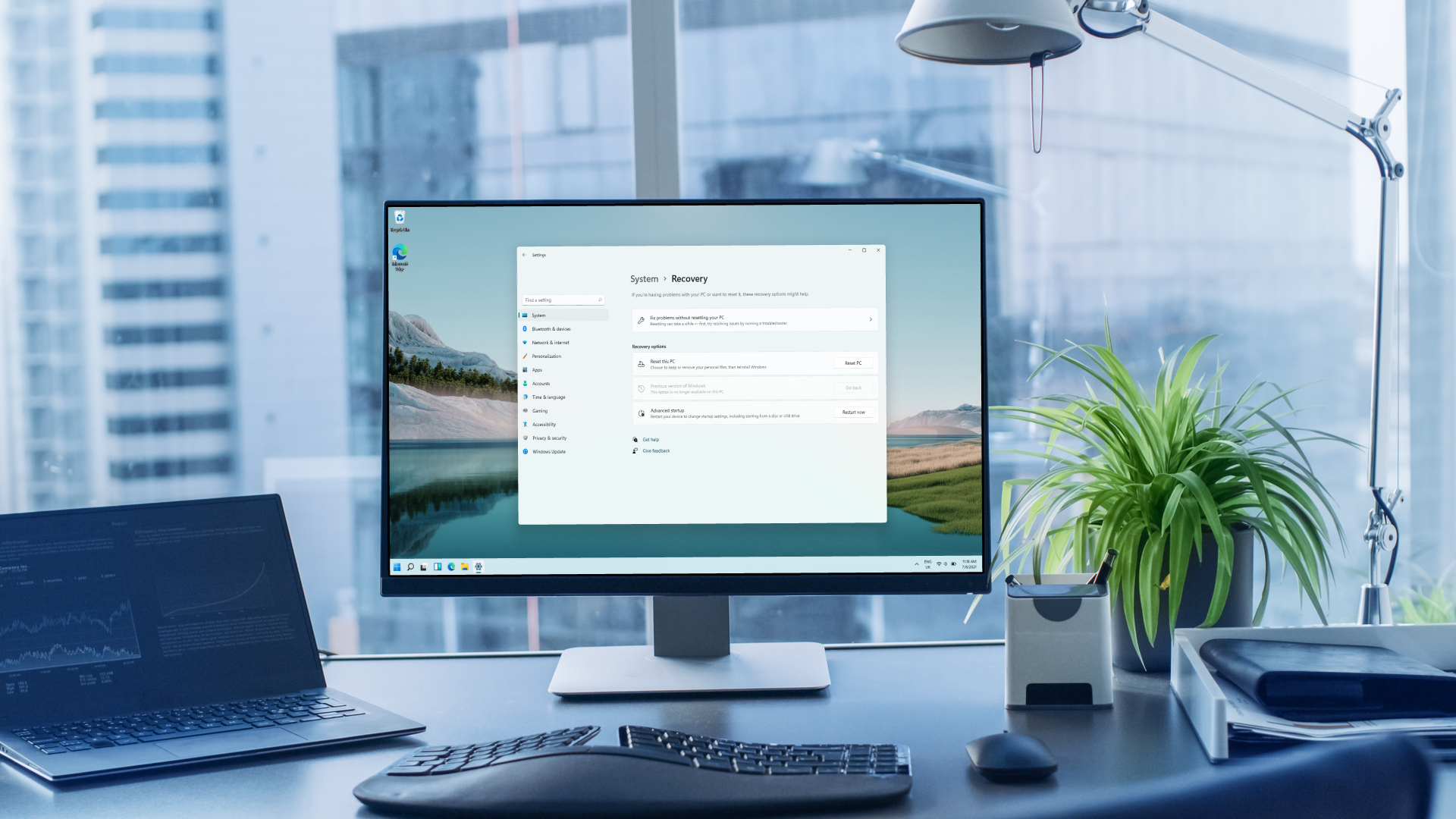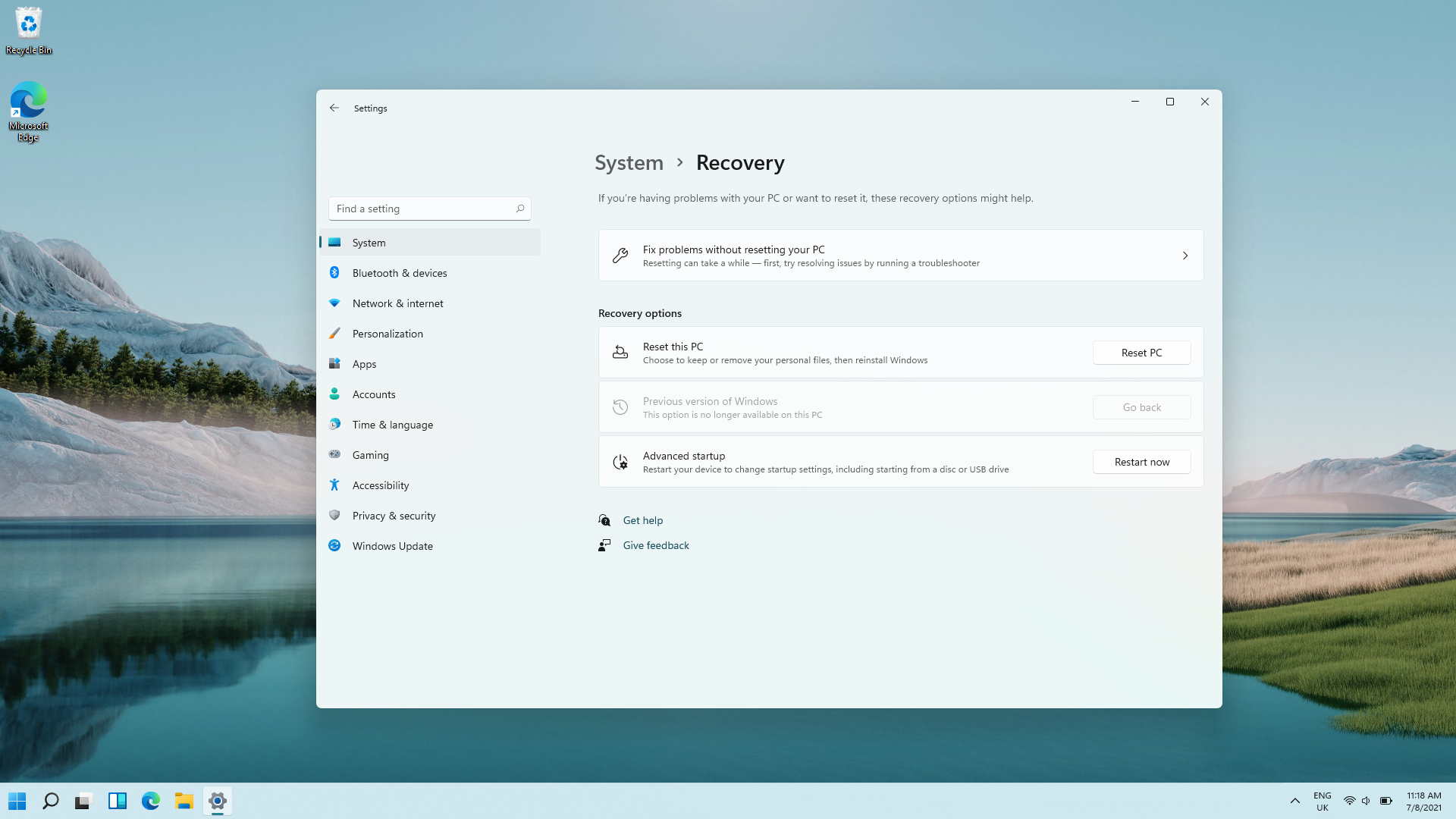You can downgrade from Windows 11 to 10, but be quick

As more users try out the insider build of Windows 11, there’s plenty of discoveries being made. One of note is the ability to roll back to Windows 10, but only within 10 days of having the upgrade installed.
Plenty of people will be flocking to upgrade once the new operating system is released to the masses, but there will be the odd occasion where a PC will have trouble in running it, and issues will come to the forefront.
While System Recovery options have been in Windows for years now, this new feature of rolling back to a previous version of Windows, rather than a mid-year update, is something that will save a lot of time for users instead of attempting a clean install.
With this in mind, here’s how you will be able to roll back with no headaches, but within a time limit.
- Why the Amazon app store being on Windows 11 is a smart decision
- Check out the best laptops you can buy
- Windows 10 is still on schedule to see an update soon
Downgrade, but with a time limit
Microsoft has made the process incredibly simple. You can easily roll back to Windows 10 by going to Settings > System > Recovery and selecting ‘Previous Version of Windows’.
However Lenovo has stated in its updated support document that this option will only be available for ten days, starting as soon as your machine is updated to Windows 11.
“Yes, once you have upgraded to Windows 11, you have 10 days to utilize the rollback function to move back to Windows 10 while keeping files and data that you brought along with you. After that 10-day period, you will need to back up your data and do a “clean install” to move back to Windows 10.”
Sign up for breaking news, reviews, opinion, top tech deals, and more.

This may cause a headache for some, especially if an issue appears after the ten-day time limit expires. But we are only at the start of testing Windows 11 on the Insider channels, so the time limit may be extended (or the feature may disappear entirely). For now though, it’s a useful feature that may benefit many, if only for ten days.
- Here’s our pick of the best laptops in 2021
Via Windows Latest

Daryl is a freelance writer and author of two books—The Making of Tomb Raider and 50 Years of Boss Fights. A third book, the follow up to ‘Tomb Raider’, comes out in 2026. Having worked at TechRadar previously as a software writer from 2021 to 2023, Daryl understands how software can benefit users, as well as having an interest in how accessibility features can benefit others.
With over a decade of experience, his work has been featured in Tom’s Guide, SUPERJUMP, Pocket Tactics, Radio Times, The Escapist, and more.